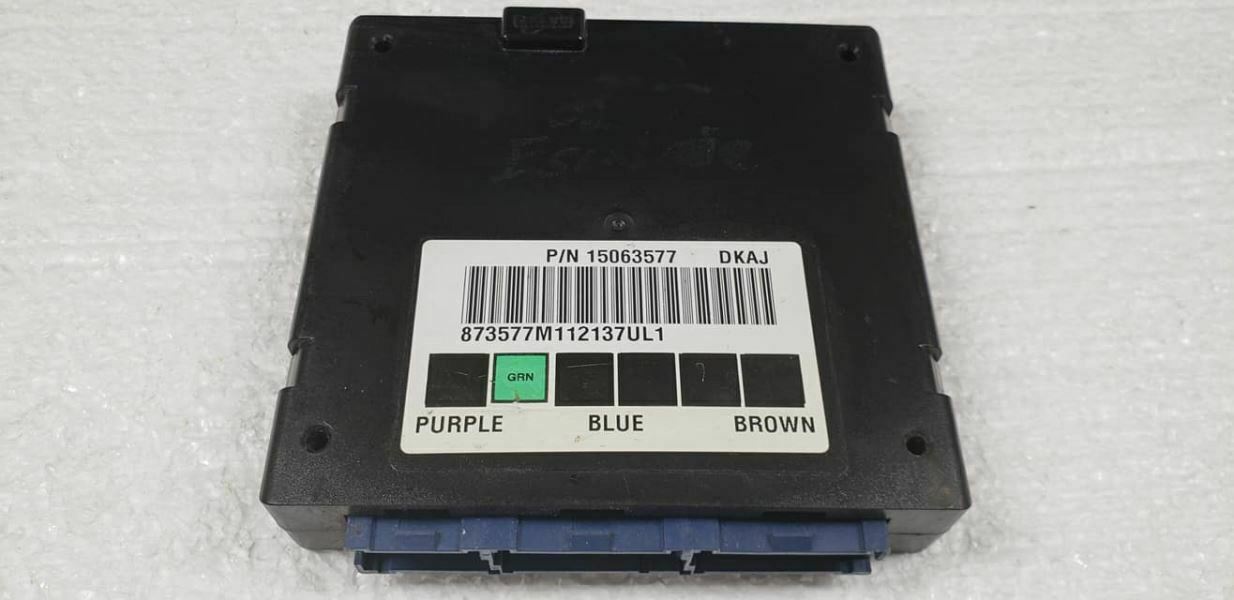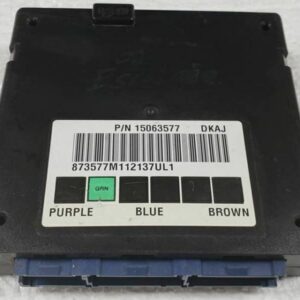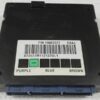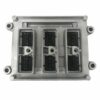Restore Your Truck’s Electronics with a Reliable, Programmed BCM
Are you chasing electrical gremlins in your 2002 GM truck or SUV? Flickering lights, power windows with a mind of their own, or a stubborn “Service 4WD” message that won’t go away are classic signs of a failing Body Control Module (BCM). As a technician with over two decades of experience, I’ve seen these symptoms countless times. The BCM is the central nervous system for your vehicle’s comfort and convenience features, and when it fails, it can create a cascade of frustrating and unpredictable problems.
This isn’t just a replacement part; it’s a complete solution. We take the biggest hassle out of the repair by programming this 2002 Tahoe Body Control Module to your truck’s specific Vehicle Identification Number (VIN) before it ships. This means no expensive trips to the dealership for programming and no special computers required for the initial setup. You get a module loaded with the latest GM software, ready to restore function and communication between your vehicle’s electronic systems.
Case Study: A Tricky Diagnosis
I remember a 2002 Yukon XL that came into the shop with a classic “no-start” condition. The owner had already replaced the battery and the starter, but the security light was still flashing on the dash. A quick scan showed a dozen communication codes (U-codes), all pointing to different modules. Instead of chasing ghosts, we went straight to the source. The BCM acts as a gateway for communication. We found corrosion on the original BCM’s connectors from a minor windshield leak. Swapping in a VIN-programmed BCM didn’t just fix the no-start; it also resolved a slow power window and an intermittent dome light issue the owner had forgotten to mention. It’s often the one part that solves multiple problems.
Is Your GM Truck Showing These Symptoms?
A faulty BCM can manifest in numerous ways. If you’re experiencing any of the following, this module is the likely solution:
- ✔ Erratic or non-functional power windows, door locks, and mirrors.
- ✔ The dreaded “Service 4WD” message appearing on the dash.
- ✔ Intermittent no-start conditions accompanied by a flashing security light.
- ✔ Interior dome lights or exterior headlights flickering or staying on.
- ✔ Gauges on the instrument cluster behaving erratically or not working at all.
- ✔ Diagnostic trouble codes (DTCs) related to lost communication, such as U0140, U0155, or U0164.
- ✔ Inoperative radio or climate controls.
A Straightforward Guide to BCM Installation
Replacing the BCM is a job most DIYers with basic tools can handle in about an hour. The key is our pre-programming service, which eliminates the most complex step.
- Safety First: Always disconnect the negative terminal from your vehicle’s battery and wait a few minutes before beginning work.
- Locate the BCM: On these GM models, the BCM is located under the driver’s side of the dashboard, typically to the left of the steering column.
- Disconnect and Remove: Carefully unplug the multiple color-coded electrical connectors. Press the release tabs firmly. Then, remove the bolts or nuts holding the BCM bracket in place and take out the old module.
- Install the New Module: Mount your new, pre-programmed BCM in the same position and secure it with the original hardware.
- Reconnect Everything: Plug all electrical connectors back into their correct slots on the new BCM. They are keyed to only fit one way. Reconnect the negative battery terminal.
- Final Checks: Start the vehicle and test all functions—windows, locks, lights, 4×4 switch, etc. Refer to the post-installation notes below if any warning lights appear.
Important Post-Installation Information
While our programming handles the heavy lifting, some vehicle systems may require a ‘handshake’ with the new BCM. There is no core charge for this part, so you can keep your original module.
- Airbag System Sync: If the airbag warning light is on after installation, a professional scan tool is needed to perform the “Setup SDM Primary Key in BCM” procedure. This syncs the new BCM with the airbag system.
- Brake Pedal Position Relearn: On some models, a brake pedal position sensor relearn may be needed to ensure proper brake light operation and to clear any traction control warnings.
Disclaimer: Specific procedures can vary. Always consult a factory service manual or a qualified technician if you are unsure about any step.
Verified Vehicle Compatibility
This module is a direct-fit replacement for the following vehicles and is compatible with service numbers 15063577, 15081857, 19208544, 15095335, DKAJ, and DPNW.
- 2002 Cadillac Escalade (4×4)
- 2002 Cadillac Escalade EXT
- 2002 Chevrolet Avalanche 1500 (4×4)
- 2002 Chevrolet Suburban 1500 (4×4)
- 2002 Chevrolet Tahoe (4×4)
- 2002 GMC Yukon (4×4)
- 2002 GMC Yukon XL 1500 (4×4)
Frequently Asked Questions About the 2002 Tahoe Body Control Module
Frequently Asked Questions
Why do you need my VIN?
Your VIN is essential because it allows us to program the BCM with the exact software and vehicle-specific options your truck came with from the factory. This ensures a seamless, plug-and-play installation without needing a trip to the dealer.
What does the BCM actually do?
The Body Control Module is a computer that controls most of your vehicle’s non-engine related electronics. This includes power windows, locks, interior and exterior lighting, security system, wipers, and 4WD engagement signals.
Is this part difficult to install myself?
For someone with basic mechanical skills, it’s a very manageable job. It’s located under the dash and involves unplugging connectors and removing a few bolts. Since we handle the programming, the hardest part is already done for you.
What if my airbag light comes on after I install it?
This can happen occasionally. It means the new BCM needs to be electronically introduced to the airbag system (SDM). This requires a ‘Setup SDM Primary Key’ procedure, which can be done by a repair shop with a professional-grade diagnostic tool.
Do I need to send my old BCM back?
No. There is no core charge or need to return your original part. You can keep it or dispose of it.



